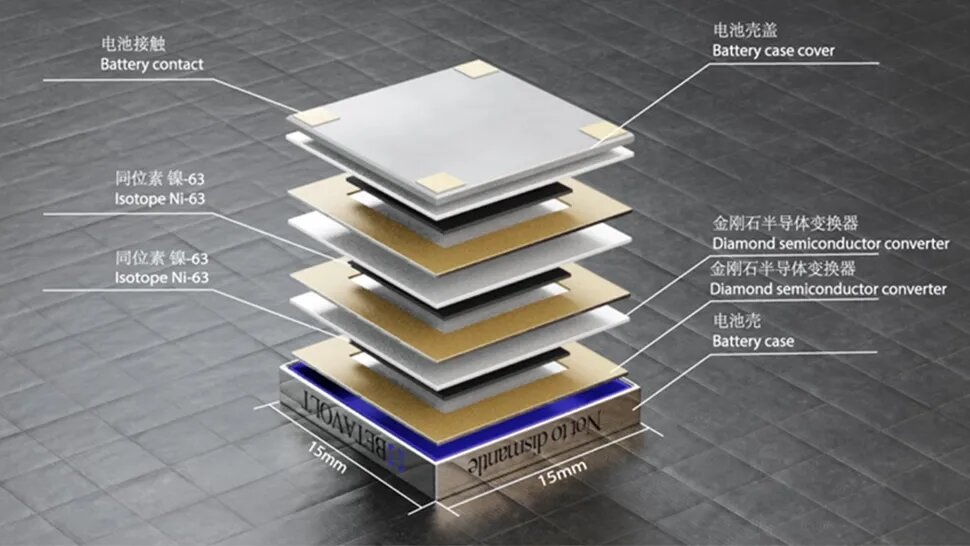A Tiny Nuclear Battery Might Power Your Upcoming Smartphone for 50 Years

Betavolt Technology, a Chinese company, has created a groundbreaking nuclear battery that can power your phone for an incredible 50 years without needing to be charged.
The small-sized atomic energy batteries, measuring just 15 x 15 x 5mm (less than a coin), are being developed by Betavolt. These compact batteries use 63 nuclear isotopes to generate 100 microwatts and 3V of electricity through a process called radioactive decay.
Currently undergoing pilot testing, Betavolt aims to mass-produce these batteries for various commercial devices, including phones, drones, aerospace equipment, AI, medical devices, advanced sensors, and micro-robots. The company drew inspiration from devices like pacemakers and satellites.
Betavolt has ambitious plans to enhance its technology and produce a 1-watt battery by 2025. The company claims that its development is ahead of European and American scientific research institutions and enterprises.
Mini Nuclear Batteries Revolutionizing Electronics: No More Chargers Needed!
This revolutionary technology has the potential to transform electronics by eliminating the need for chargers or portable power banks. Devices powered by these batteries could run continuously without the batteries degrading in terms of capacity and lifespan, as seen with traditional Li-ion batteries.
The BV100, as Betavolt calls it, also promises increased safety. According to the company, these batteries won't catch fire or explode, even when punctured or exposed to high temperatures. This contrasts with some current batteries that pose safety risks when damaged.
Unlimited Power for Continuous Use: Drones, Phones, Electric Cars, and More!
This innovation could provide continuous power for drones, phones that never stop running, and electric cars that don't require recharging. While nuclear batteries are currently used in space exploration and other specialized applications, Betavolt's approach aims to make them more accessible and efficient.
How Betavolt's Radioactive Battery Works: A Safer Approach
Betavolt scientists used nickel-63, a radioactive element, as the energy source and diamond semiconductors as energy converters. The team developed a thin single-crystal diamond semiconductor, placing a nickel-63 sheet between two diamond semiconductor converters. The decay energy of the radioactive source is then converted into an electrical current.
The advantages of Betavolt's atomic energy batteries include their lightweight design, long service life, high energy density, and the ability to function under extreme temperatures from -60 to 120 degrees Celsius. The modular design allows multiple atomic batteries to be connected, providing higher energy output for various applications, including automotive technology and AI systems.
Addressing Concerns: Safety First
Despite the incredible potential, some may be hesitant due to the association of nuclear materials with disasters like Chernobyl and Fukushima. Betavolt addresses these concerns, stating that the battery is safe with no external radiation. It can be used in medical devices inside the human body, such as pacemakers and cochlear implants. After decay, the nuclear isotopes become non-radioactive copper, posing no environmental threat.
While this technology may sound like something out of 1950s science fiction, it has the potential to revolutionize electronics, providing unwired, always-on devices and ushering in a new era of nuclear energy use.


